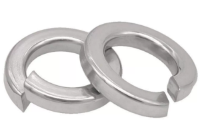Effective Methods for Repairing Large Screw Holes in Drywall
Best Filling Techniques for Large Screw Holes in Drywall
Drywall is a popular material used in homes and offices due to its ease of installation and finish. However, one common issue that arises during drywall construction and renovation is dealing with large screw holes. These can occur from various reasons, including incorrect screw placement, removal of fixtures, or simply wear and tear. Fortunately, filling these large screw holes is a manageable task, and with the right techniques and materials, you can achieve a smooth and professional finish.
Assess the Damage
Before you begin the repair process, it’s essential to assess the size and condition of the screw holes. Small holes can often be filled with spackle or joint compound, but larger holes require more robust solutions. For holes larger than a quarter-inch, it's usually best to take extra steps to ensure a solid repair.
Gather the Right Materials
To effectively fill large screw holes, you will need a few essential supplies - Pre-mixed joint compound or drywall mud It comes in various forms, but a pre-mixed version is often the easiest for beginners. - A putty knife or trowel A 4- or 6-inch putty knife is generally ideal for applying the compound. - Sandpaper (fine-grit) This will be useful for smoothing down the area after the compound dries. - Primer and paint After the repair, you will need these for finishing touches.
Prepare the Area
Before you start filling the hole, ensure that the area around it is clean and free of dust. Remove any debris and, if necessary, gently sand around the hole to create a rough surface for the joint compound to adhere better. In cases where the drywall has crumbled significantly, you may want to cut a clean edge around the hole with a utility knife.
Fill the Hole
best filling large screw holes in drywall

1. Apply Joint Compound Using your putty knife, scoop up some joint compound and firmly press it into the hole. It’s crucial to push the compound deep into the hole to provide a solid base. Overfill slightly to ensure that once it dries, you can sand it down to a smooth finish.
2. Smooth Out the Surface After filling the hole, use the putty knife's edge to scrape off any excess compound around the edges of the hole. This will minimize the amount of sanding needed later. For very large holes, consider using a drywall repair patch or mesh tape to support the joint compound. Apply it around the hole before filling it to prevent cracking and ensure a more secure repair.
3. Let It Dry Allow the joint compound to dry completely. Depending on the humidity and temperature, this could take anywhere from a few hours to overnight. Check the product instructions for drying times.
Sand and Finish
Once the compound is dry, use fine-grit sandpaper to smooth out the repaired area. Sand gently to avoid damaging the surrounding drywall. Your goal is to create an even surface that is flush with the rest of the wall. After sanding, wipe down the area with a damp cloth to remove any dust.
Prime and Paint
Finally, apply a coat of primer to the repaired area to seal the joint compound and enhance paint adherence. Once the primer is dry, finish with your chosen paint color to match the surrounding wall. This step will help blend the repair seamlessly with the rest of the wall.
Conclusion
Filling large screw holes in drywall might seem daunting, but by following these steps and using the right materials, you can ensure a successful repair. With a little patience and attention to detail, your wall can look as good as new, making your living or working space feel polished and well-maintained.
-
Top Choices for Plasterboard FixingNewsDec.26,2024
-
The Versatility of Specialty WashersNewsDec.26,2024
-
Secure Your ProjectsNewsDec.26,2024
-
Essential Screws for Chipboard Flooring ProjectsNewsDec.26,2024
-
Choosing the Right Drywall ScrewsNewsDec.26,2024
-
Black Phosphate Screws for Superior PerformanceNewsDec.26,2024
-
The Versatile Choice of Nylon Flat Washers for Your NeedsNewsDec.18,2024










